The Incredible Hulk (pilot)
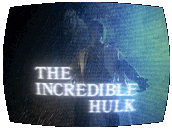 Scientist David Bruce Banner is recovering from the traumatic loss of his wife in a car accident, while continuing his work into untapping the barely-used potential strength of the human body. As he interviews and runs tests on numerous ordinary individuals who have achieved amazing adrenaline-fueled feats in moments of crisis, Banner is disturbed by the fact that he was unable to save his own wife. When his research leads to what seems like a dead end, a desperate Banner intentionally irradiates himself with gamma radiation. The first noticeable effect is that it leaves Banner impatient and easily angered. But when his frustration peaks and he becomes furious, Banner mutates into an enormous, bemuscled green beast with superhuman strength. Despite this, his instincts to preserve life lead him to try to save a drowning girl, but when her father fires a rifle at Banner, he is powerless to do anything but attack the man. When Banner’s rage subsides, he reverts to normal, with only vague memories of what he did in his altered state.
Scientist David Bruce Banner is recovering from the traumatic loss of his wife in a car accident, while continuing his work into untapping the barely-used potential strength of the human body. As he interviews and runs tests on numerous ordinary individuals who have achieved amazing adrenaline-fueled feats in moments of crisis, Banner is disturbed by the fact that he was unable to save his own wife. When his research leads to what seems like a dead end, a desperate Banner intentionally irradiates himself with gamma radiation. The first noticeable effect is that it leaves Banner impatient and easily angered. But when his frustration peaks and he becomes furious, Banner mutates into an enormous, bemuscled green beast with superhuman strength. Despite this, his instincts to preserve life lead him to try to save a drowning girl, but when her father fires a rifle at Banner, he is powerless to do anything but attack the man. When Banner’s rage subsides, he reverts to normal, with only vague memories of what he did in his altered state.
Banner confides his experiences – as much as he can remember – to his lab associate, and they begin trying to replicate his transformation under controlled laboratory conditions. Reporter Jack McGee, who has been hounding Banner and his staff for a story on their research, is snooping around when Banner transforms into the Hulk yet again during a catastrophic lab accident. Banner, even in his transformed state, is unable to save the life of his lab associate, and goes into hiding; while McGee sees Banner’s mutated form, he believes Banner has also died in the inferno. McGee decides that he will pursue the enormous green creature, which he has dubbed “the incredible hulk” in the resulting front-page story, to chronicle its capture and execution for murder. Banner is forced to let the world think he is dead and goes on the run.
written by Kenneth Johnson
directed by Kenneth Johnson
music by Joe Harnell
Cast: Bill Bixby (David Bruce Banner), Susan Sullivan (Elaina Marks), Jack Colvin (Jack McGee), Lou Ferrigno (The Hulk), Susan Batson (Mrs. Maier), Mario Ballo (Mr. Bram), Eric Server (Policeman), Charles Siebert (Ben), Terrance Lock (Young Man), June Whitley Taylor (Woman), George Brenlin (Man at Lake), Jake Mitchell (Jerry), William Larsen (Minister), Olivia Barash (Girl at Lake), Eric Deon (B.J.)
Notes: Using only the characters of Bruce Banner and the Hulk from Marvel’s Incredible Hulk comics, the TV incarnation of the character is the creation of Kenneth Johnson, who had created the Six Million Dollar Man spinoff The Bionic Woman, and would go on to create such genre classics as V and Alien Nation. Johnson was not a fan of the original comics, and as such didn’t fight CBS over such requested changes as altering Bruce Banner’s name to David Bruce Banner (on the grounds that network executives felt the name “Bruce” was “too gay-ish”). Johnson wanted a few other changes – such as Banner turning into a red Hulk rather than a green one – that were vetoed by Marvel. Unlike his unsatisfactory experiences with the TV adaptation of Spider-Man, however, Stan Lee was happy with the TV Hulk, feeling that the changes made were necessary to make the character work in a teleivision context. Arnold Schwarzenegger auditioned for the role of the Hulk, but was deemed too short for the role.
LogBook entry by Earl Green



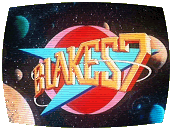



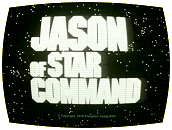
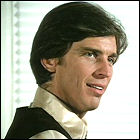 Cast: Craig Littler (Jason), Sid Haig (Dragos), Susan O’Hanlon (Capt. Nicole Davidoff), Charlie Dell (Prof. E.J. Parsafoot), James Doohan (Commander Canarvin)
Cast: Craig Littler (Jason), Sid Haig (Dragos), Susan O’Hanlon (Capt. Nicole Davidoff), Charlie Dell (Prof. E.J. Parsafoot), James Doohan (Commander Canarvin)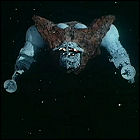
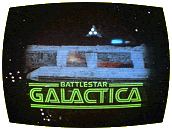

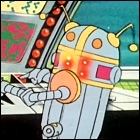 Note: For this episode only – the first one produced – Ronnie Schell plays Tiny, but the actor says he did not provide the voice of Jason for this first episode. The voice actor for Jason remains unknown for this episode alone. 7-Zark-7 says that Center Neptune is “900 fathoms beneath the surface of the sea” off of America’s west coast – or just a little over a mile undersea. All of Dr. Nambu’s appearances in this episode are replaced by narration or orders delivered by radio from 7-Zark-7. Dr. Nambu would appear in later episodes, but he was given the name of Chief Anderson – a name that, in the original Gatchaman episodes, belonged to a completely different character.
Note: For this episode only – the first one produced – Ronnie Schell plays Tiny, but the actor says he did not provide the voice of Jason for this first episode. The voice actor for Jason remains unknown for this episode alone. 7-Zark-7 says that Center Neptune is “900 fathoms beneath the surface of the sea” off of America’s west coast – or just a little over a mile undersea. All of Dr. Nambu’s appearances in this episode are replaced by narration or orders delivered by radio from 7-Zark-7. Dr. Nambu would appear in later episodes, but he was given the name of Chief Anderson – a name that, in the original Gatchaman episodes, belonged to a completely different character.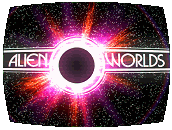

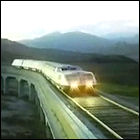 Cast: Steve Lawrence (Mike Post), Char Fontane (Cindy Chappell), Don Stroud (Jack Fisk), Keenan Wynn (Winfield Root), Deborah Benson (Barbara Root), Ron Masak (Fred), Don Meredith (Rick Prince), Vicki Lawrence (Karen Prince), George Hamilton (David Belnik), Stella Stevens (Lucy), Fred Williamson (Al Roberts), Edward Andrews (Harry Flood), Patrick Collins (David Noonan), Harrison Page (George Boone), Robert Alda (Dr. Lewis), Nita Talbot (Rose Casey), Aarika Wells (Gilda), William Nuckols (Wally), Michael DeLano (Lou Atkins), Charlie Brill (Robert), John Karlen (Quinn), Frank R. Christi (Tony Packoe), H.M. Wynant (Fairmont), Anthony Palmer (T.C. Baker), Howard Honig (Sam Howard), Allen Williams (Riley), Parley Baer (Heaton), Sid Conrad (Whittington), Robert Karnes (Martin), Cameron Young (Fenner), Sylvester Words (Porter), Orin Cannon (Stationmaster), Chuck Mitchell (Big Ed), Bert Conway (Workman)
Cast: Steve Lawrence (Mike Post), Char Fontane (Cindy Chappell), Don Stroud (Jack Fisk), Keenan Wynn (Winfield Root), Deborah Benson (Barbara Root), Ron Masak (Fred), Don Meredith (Rick Prince), Vicki Lawrence (Karen Prince), George Hamilton (David Belnik), Stella Stevens (Lucy), Fred Williamson (Al Roberts), Edward Andrews (Harry Flood), Patrick Collins (David Noonan), Harrison Page (George Boone), Robert Alda (Dr. Lewis), Nita Talbot (Rose Casey), Aarika Wells (Gilda), William Nuckols (Wally), Michael DeLano (Lou Atkins), Charlie Brill (Robert), John Karlen (Quinn), Frank R. Christi (Tony Packoe), H.M. Wynant (Fairmont), Anthony Palmer (T.C. Baker), Howard Honig (Sam Howard), Allen Williams (Riley), Parley Baer (Heaton), Sid Conrad (Whittington), Robert Karnes (Martin), Cameron Young (Fenner), Sylvester Words (Porter), Orin Cannon (Stationmaster), Chuck Mitchell (Big Ed), Bert Conway (Workman)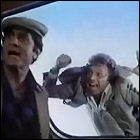 Notes: Intended to be a sort of futuristic version of The Love Boat, Supertrain was a dazzlingly expensive disaster for NBC. It was initially produced, and its pilot directed, by Dan Curtis, producer and director of such TV cult classics as Dark Shadows and the pair of TV movies that led to Kolchak: The Night Stalker. Supertrain’s impressive-for-the-time miniature model work and its matching full-size “futuristic train” standing sets made it the most expensive television series in history to date, but its plunging post-pilot-movie ratings saw NBC pulling the plug after multiple attempts to retool and reschedule. This by itself would’ve simply been expensive, but when paired with the extravagant money that NBC put on the table for the U.S. broadcast rights to the 1980 Summer Olympics (a cost it then had to eat when the United States boycotted the Olympics, held that year in Moscow), it nearly bankrupted the network.
Notes: Intended to be a sort of futuristic version of The Love Boat, Supertrain was a dazzlingly expensive disaster for NBC. It was initially produced, and its pilot directed, by Dan Curtis, producer and director of such TV cult classics as Dark Shadows and the pair of TV movies that led to Kolchak: The Night Stalker. Supertrain’s impressive-for-the-time miniature model work and its matching full-size “futuristic train” standing sets made it the most expensive television series in history to date, but its plunging post-pilot-movie ratings saw NBC pulling the plug after multiple attempts to retool and reschedule. This by itself would’ve simply been expensive, but when paired with the extravagant money that NBC put on the table for the U.S. broadcast rights to the 1980 Summer Olympics (a cost it then had to eat when the United States boycotted the Olympics, held that year in Moscow), it nearly bankrupted the network. 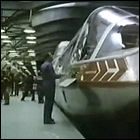 Had Supertrain run to a full season, the expense involved in the sets and miniatures would have been amortized over the budgets of 20-odd episodes. As it is, the show lasted ten hours, meaning that fully half a million dollars of each episode’s budget was spent on those sets and effects. The custom model footage shows Supertrain running on wider-gauge tracks than a standard railroad, though many of the railroad POV shots were obviously filmed on a normal-gauge railroad. Additionally, though the “running firefight atop the cars of a moving train” is a staple of American TV and cinema, the tornado-speed movement of Supertrain should make such a scenario physically impossible (unless, of course, the script calls for it). Supertrain!
Had Supertrain run to a full season, the expense involved in the sets and miniatures would have been amortized over the budgets of 20-odd episodes. As it is, the show lasted ten hours, meaning that fully half a million dollars of each episode’s budget was spent on those sets and effects. The custom model footage shows Supertrain running on wider-gauge tracks than a standard railroad, though many of the railroad POV shots were obviously filmed on a normal-gauge railroad. Additionally, though the “running firefight atop the cars of a moving train” is a staple of American TV and cinema, the tornado-speed movement of Supertrain should make such a scenario physically impossible (unless, of course, the script calls for it). Supertrain!
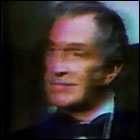 Cast: Vincent Price (Jason Winters), Coral Browne (Maggie Winters), Woodrow Palfrey (Ticket Agent), William Edward Phipps (E. Patrick Callahan), James Reynolds (R.J. Walker), James MacArthur (Dr. Mark Toland), Jerry Stiller (Edward Chernoff), Pamela Toll (Olivia Toland), Michael Conrad (Sullivan), Alan Sues (Bank Manager), Anne Meara (Gloria Chernoff), Doris Dowling (Sister Bertelli), John de Lancie (John Clayton), Eldon Quick (Niles), Jan Clayton (First Nun), Del Monroe (First Gangster), Richard Angarola (Mr. Durant), Don Keefer (Jim Fraser), Wallace Earl Laven (Virginia Fraser), Bob Delegall (Dr. Samuels), Gay Rowan (Sister Allison), Melvin F. Allen (Mel), Buck Young (Police Clerk), Michael Laurence (First Reporter), Charles Rowe (Second Reporter), John Berwick (Nick), Dar Robinson (Lou), Karen Fredrik (Debbie Clayton)
Cast: Vincent Price (Jason Winters), Coral Browne (Maggie Winters), Woodrow Palfrey (Ticket Agent), William Edward Phipps (E. Patrick Callahan), James Reynolds (R.J. Walker), James MacArthur (Dr. Mark Toland), Jerry Stiller (Edward Chernoff), Pamela Toll (Olivia Toland), Michael Conrad (Sullivan), Alan Sues (Bank Manager), Anne Meara (Gloria Chernoff), Doris Dowling (Sister Bertelli), John de Lancie (John Clayton), Eldon Quick (Niles), Jan Clayton (First Nun), Del Monroe (First Gangster), Richard Angarola (Mr. Durant), Don Keefer (Jim Fraser), Wallace Earl Laven (Virginia Fraser), Bob Delegall (Dr. Samuels), Gay Rowan (Sister Allison), Melvin F. Allen (Mel), Buck Young (Police Clerk), Michael Laurence (First Reporter), Charles Rowe (Second Reporter), John Berwick (Nick), Dar Robinson (Lou), Karen Fredrik (Debbie Clayton)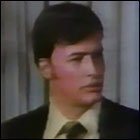 Notes: If
Notes: If 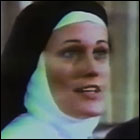 Lancie, long before he became Star Trek’s
Lancie, long before he became Star Trek’s 
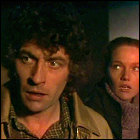

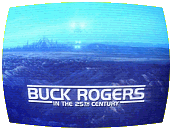

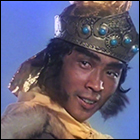 Cast: Masaaki Sakai (Monkey), Masako Natsume (Tripitaka), Shirô Kishibe (Sandy), Toshiyuki Nishida (Pigsy), Takao Inoue (Emperor), Yatsuko Tanami (Buddha), Emi Shindo (Lady Vega), Maki Carcer (Demon), David Collings (Monkey’s voice – English dub), Maria Warburg (Tripitaka’s voice – English dub), Gareth Armstrong (Sandy’s voice – English dub), Peter Woodthorpe (Pigsy’s voice – English dub), Frank Duncan (Narrator – English dub), Cecile Chevreau (Buddha’s voice – English dub), Miriam Margolyes (Voices – English dub), Peter Marinker (Voices – English dub)
Cast: Masaaki Sakai (Monkey), Masako Natsume (Tripitaka), Shirô Kishibe (Sandy), Toshiyuki Nishida (Pigsy), Takao Inoue (Emperor), Yatsuko Tanami (Buddha), Emi Shindo (Lady Vega), Maki Carcer (Demon), David Collings (Monkey’s voice – English dub), Maria Warburg (Tripitaka’s voice – English dub), Gareth Armstrong (Sandy’s voice – English dub), Peter Woodthorpe (Pigsy’s voice – English dub), Frank Duncan (Narrator – English dub), Cecile Chevreau (Buddha’s voice – English dub), Miriam Margolyes (Voices – English dub), Peter Marinker (Voices – English dub)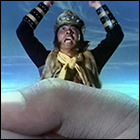 Notes: The airdate shown here reflects the BBC2 premiere date rather than the Japanese premiere date on NTV. Monkey is a satirical Japanese take on the 16th-century Chinese novel Saiyuki (a.k.a. Journey To The West), a staple of Chinese literature that has been adapted dozens of times, both more faithfully told and more bizarrely told (it’s also the basis for the Dragonball franchise). Monkey initiates what is now apparently a tradition of casting a woman as the young male priest Tripitaka.
Notes: The airdate shown here reflects the BBC2 premiere date rather than the Japanese premiere date on NTV. Monkey is a satirical Japanese take on the 16th-century Chinese novel Saiyuki (a.k.a. Journey To The West), a staple of Chinese literature that has been adapted dozens of times, both more faithfully told and more bizarrely told (it’s also the basis for the Dragonball franchise). Monkey initiates what is now apparently a tradition of casting a woman as the young male priest Tripitaka.
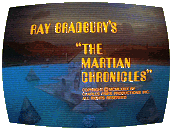
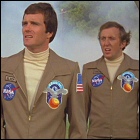 Notes: A lavish co-production between NBC and the BBC, shot on “otherworldly” Lanzarote (a volcanic island where the BBC would also later shoot the 1984
Notes: A lavish co-production between NBC and the BBC, shot on “otherworldly” Lanzarote (a volcanic island where the BBC would also later shoot the 1984 

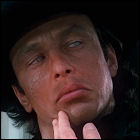 Cast: Jim McMullan (John Moore), James Wainwright (Simon Quaid), Judith Chapman (Laura Garvey), William Jordan (Joseph Oppenheimer), Stewart Moss (Foley), Dennis Holahan (Captain Farrell), Morgan Paull (Parker), John Kirby (Dudley), Paul Henry Itkin (Horton), Mo Lauren (Jan), Nancy McCurry (Roberta), Nicholas Guest (Sailor), Larry Levine (Technician), Cassandra Peterson (Dance Hall Girl), Edward A. Coch Jr. (Chubby Gunman), Alex Kubik (Gunfighter)
Cast: Jim McMullan (John Moore), James Wainwright (Simon Quaid), Judith Chapman (Laura Garvey), William Jordan (Joseph Oppenheimer), Stewart Moss (Foley), Dennis Holahan (Captain Farrell), Morgan Paull (Parker), John Kirby (Dudley), Paul Henry Itkin (Horton), Mo Lauren (Jan), Nancy McCurry (Roberta), Nicholas Guest (Sailor), Larry Levine (Technician), Cassandra Peterson (Dance Hall Girl), Edward A. Coch Jr. (Chubby Gunman), Alex Kubik (Gunfighter)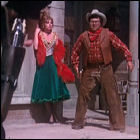 Peterson in a background part, and you do hear the familiar Enterprise bridge background sound effects in the Westworld control room – just the latest of a long string of appearances in other series since Star Trek had gone off the air in 1969. Somewhat unenviably stepping into the shoes of Yul Brynner for the small screen is actor Alex Kubik in an early TV role; he went on to appear in CHiPS, Airwolf, The Dukes Of Hazzard and Knight Rider.
Peterson in a background part, and you do hear the familiar Enterprise bridge background sound effects in the Westworld control room – just the latest of a long string of appearances in other series since Star Trek had gone off the air in 1969. Somewhat unenviably stepping into the shoes of Yul Brynner for the small screen is actor Alex Kubik in an early TV role; he went on to appear in CHiPS, Airwolf, The Dukes Of Hazzard and Knight Rider.
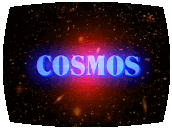
 Notes: Segments in different locations and in studio all had different directors, so it’s something of a misnomer to credit any one episode of Cosmos to a single director. Other directors credited, and the location shoots they directed, are Rob McCain (Spaceship), Richard J. Wells (Holland / Library of Alexandria / Cosmic Calendar), Tim Weidlinger and Geoffrey Haines-Stiles (Kepler / Egypt), and David F. Oyster (Monterey / Mt. Wilson Observatory).
Notes: Segments in different locations and in studio all had different directors, so it’s something of a misnomer to credit any one episode of Cosmos to a single director. Other directors credited, and the location shoots they directed, are Rob McCain (Spaceship), Richard J. Wells (Holland / Library of Alexandria / Cosmic Calendar), Tim Weidlinger and Geoffrey Haines-Stiles (Kepler / Egypt), and David F. Oyster (Monterey / Mt. Wilson Observatory).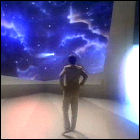 panels and displays for 1979’s Star Trek: The Motion Picture, and would serve in a wider design capacity in the 1980s and ’90s Star Trek spinoffs, The Next Generation, Deep Space Nine, and Voyager. (Sternbach’s work on the first Trek movie and Cosmos overlapped.) He had also participated in pioneering computer animation productions, including JPL’s CGI visualizations of the early Voyager planetary flybys and the movie The Last Starfighter. Sternbach’s sole Emmy Award was the result of his work on Cosmos, rather than any of the Star Trek series.
panels and displays for 1979’s Star Trek: The Motion Picture, and would serve in a wider design capacity in the 1980s and ’90s Star Trek spinoffs, The Next Generation, Deep Space Nine, and Voyager. (Sternbach’s work on the first Trek movie and Cosmos overlapped.) He had also participated in pioneering computer animation productions, including JPL’s CGI visualizations of the early Voyager planetary flybys and the movie The Last Starfighter. Sternbach’s sole Emmy Award was the result of his work on Cosmos, rather than any of the Star Trek series.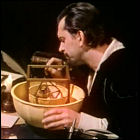 In the strictest sense, none of the series’ music received an on-screen credit, but this episode alone contains excerpts of works by Beethoven, Shostakovich, Hovhaness, Rimsky-Korsakov, and 20th century musicians such as Vangelis and Italian prog rock group Le Orme. In 2000, for Cosmos’ DVD release, additional segments written by Ann Druyan and Steven Soter, and hosted by Druyan, amended each episode with a summary of scientific discoveries made since the 1980 broadcast of the original episodes.
In the strictest sense, none of the series’ music received an on-screen credit, but this episode alone contains excerpts of works by Beethoven, Shostakovich, Hovhaness, Rimsky-Korsakov, and 20th century musicians such as Vangelis and Italian prog rock group Le Orme. In 2000, for Cosmos’ DVD release, additional segments written by Ann Druyan and Steven Soter, and hosted by Druyan, amended each episode with a summary of scientific discoveries made since the 1980 broadcast of the original episodes.